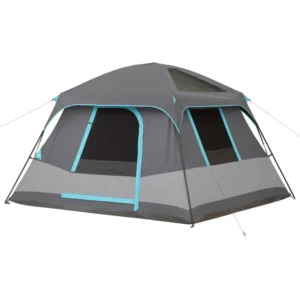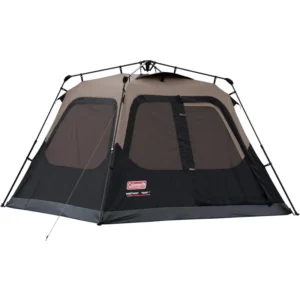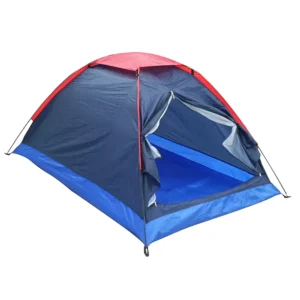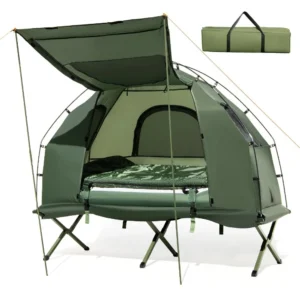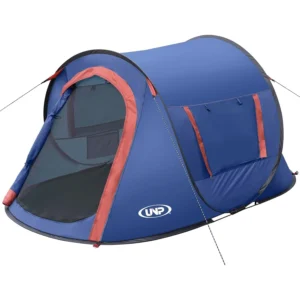Introduction to Two-Room Tents
Two-room tents represent a versatile camping solution featuring divided interior spaces, created either through sewn-in walls or removable dividers that effectively separate the shelter into distinct living areas. These innovative structures have revolutionized group camping experiences by addressing the fundamental limitations of traditional single-room options, which often force everyone into one cramped, chaotic space regardless of group size or composition.
When multiple people share a standard tent, privacy becomes nearly non-existent, gear gets jumbled together, and different sleep schedules can cause constant disruption. Two-room tents solve these issues by providing distinct zones that allow for privacy, superior organization, remarkable versatility, and enhanced overall comfort—benefits we’ll explore thoroughly throughout this article.
Our recommendations stem from extensive field testing across varied weather conditions and with diverse group configurations. Whether you’re considering cabin-style models with central dividers or tunnel designs with separate sleeping pods, understanding the advantages of multi-room options can significantly elevate your camping experience. The contrast with compact shelters for two campers becomes immediately apparent when accommodating larger groups.
For groups seeking enhanced camping comfort, exploring quality two-room camping tents provides numerous practical advantages that transform outdoor adventures.
What Makes Two-Room Tents Ideal for Group Camping
Two-room tents occupy a sweet spot in the camping shelter spectrum—offering more privacy and organization than single large tents while maintaining the cohesion and convenience lacking when groups use multiple separate shelters. This balance makes them particularly valuable for family outings, friend groups, and extended camping trips.
The dividers that create these separate spaces come in several varieties, each with distinct advantages:
– Sewn-in dividers offer more complete separation and better sound dampening
– Toggle-in or clip-in dividers provide flexibility to remove the barrier when desired
– Zip-in dividers create doorway-like access between spaces while maintaining privacy
Common layouts include central living areas flanked by sleeping pods or single rectangular structures with a central divider separating two equal spaces. Understanding the differences between these designs is crucial, as they significantly impact how the tent functions for your specific group.
For deeper insights into available configurations and how they might serve your group’s needs, exploring information about two-room tent layouts and sizes can help you make more informed decisions about which design will best accommodate your camping party.
Enhanced Privacy: Creating Personal Space Within a Group Setting
One of the most significant advantages of two-room tents is the privacy they provide within a shared camping experience. These designs create natural boundaries that respect individual comfort while maintaining the togetherness that makes group camping enjoyable.
Consider a family with young children who need earlier bedtimes. Parents can tuck little ones into one room while adults continue socializing in the other space without disturbing sleep. The divider creates a buffer zone that partially blocks light and reduces sound—not completely soundproof but significantly better than a completely open space.
Similarly, mixed-gender friend groups benefit enormously from separate changing and sleeping quarters. No more awkward moments trying to change clothes while others turn their backs or waiting outside the tent in the rain while someone gets dressed inside. The divided spaces create natural zones of privacy that reduce discomfort and enhance everyone’s experience.
Even when everyone shares similar schedules, having designated spaces allows someone to retreat for a midday nap or quiet reading time without feeling completely isolated from the group. This balance between togetherness and separation is precisely what makes two-room tents transform camping privacy in ways single-room options simply cannot.
For maximum comfort during changing and moving around, many campers prefer tall stand-up camping tents that provide full standing height throughout both rooms.
Superior Organization: Structured Spaces for Clutter-Free Camping
Beyond privacy, the divided structure of two-room tents creates natural organizational zones that keep camping life orderly and stress-free. Rather than having sleeping bags, clothes, gear, and food storage all jumbled in one space, separate rooms allow for logical separation of functions.
A common and effective arrangement dedicates one room entirely to sleeping while reserving the second space for gear storage, changing clothes, and general living activities. This separation prevents the frustration of searching through piles of sleeping bags and personal items to find cooking equipment or rain gear when needed.
The division also allows you to keep wet or muddy items completely separate from clean, dry sleeping areas. After a rainy hike, boots, jackets, and packs can remain in the “wet room” while sleeping quarters stay pristine and comfortable. This separation is especially valuable during extended trips or in challenging weather conditions.
Many experienced campers create dedicated zones within each room—designating specific areas for clothing storage, equipment, food supplies, and personal items. This systematic approach prevents the all-too-common camping scenario of emptying the entire tent to find a missing headlamp or snack.
For additional storage solutions that complement room separation, understanding the benefits of tent vestibules can further enhance your organizational system by providing additional covered storage outside the main living spaces.
Versatility in Action: Multiple Uses for Divided Spaces
The flexibility of two-room tents truly sets them apart from other camping accommodations. These versatile structures can be reconfigured to meet changing needs throughout your trip, providing solutions for various scenarios that single-room options cannot address.
Depending on your specific group composition, the spaces can serve numerous functions:
– Parents’ room and kids’ room for families
– Sleeping quarters and living/dining area
– Sleeping space and gear storage/changing room
– Dry, clean zone and wet, muddy zone during rainy conditions
– Human quarters and pet area for those camping with four-legged friends
Tents with removable dividers offer even greater adaptability, allowing the space to transform from separate rooms to a single large area for group activities during the day, then back to private quarters at night. This adaptability means your shelter can evolve as your needs change throughout the trip.
Weather changes often demand different configurations. During extended rain, having a dry communal space separate from sleeping areas becomes invaluable for maintaining morale. In hot weather, removing dividers might improve air circulation while still maintaining the organizational benefits of designated zones.
While mastering two-person lightweight tent setup involves relatively straightforward processes, multi-room shelters require more planning—but this additional complexity delivers significantly enhanced functionality for groups.
Enhanced Comfort & Livability for Extended Stays
Two-room tents dramatically improve the overall comfort of group camping experiences, especially during longer trips. The expanded interior volume typically provides greater headroom and floor space compared to standard tents, creating a more home-like environment that reduces the cramped feeling often associated with camping.
Many premium two-room models feature near-vertical walls that maximize usable space rather than the sharply sloped walls of traditional dome tents. This architectural advantage means more room to move around, stand upright, and arrange gear efficiently—small comforts that become increasingly important as days in camp accumulate.
Multiple doors and windows positioned throughout separate rooms improve ventilation management significantly. This design allows for customized airflow in different zones—particularly valuable when some campers prefer cooler sleeping conditions while others want warmer spaces. The ability to manage temperature zones independently represents a major comfort upgrade over single-room options.
The psychological benefit of having defined spaces should not be underestimated. Many campers report feeling less claustrophobic and more relaxed when they have designated areas for different activities rather than performing all camping functions in one confined space. This mental comfort translates directly to more enjoyable, longer trips with fewer “I’m ready to go home” moments.
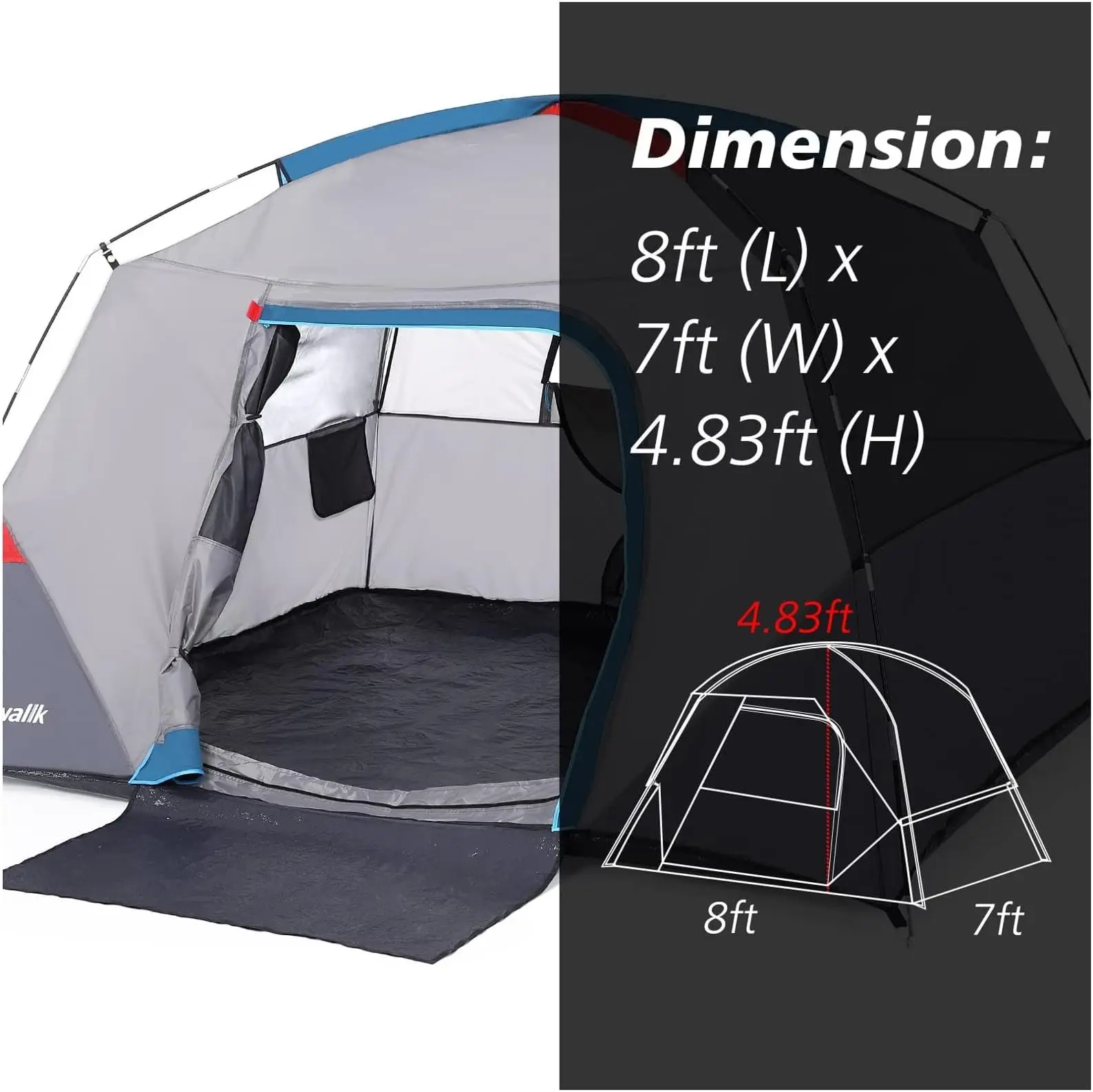
For those prioritizing quick setup alongside comfort, instant camping tents with multiple rooms offer the best of both worlds—spaciousness with minimal setup time.
Tall / Stand Up Camping Tent, Two Room Camping Tent
$407.93 Select options This product has multiple variants. The options may be chosen on the product page- $476.52 Select options This product has multiple variants. The options may be chosen on the product page
Easy Setup Camping Tent, Instant Camping Tent
Instant Cabin Tent Double Layer Canvas 1-Minute Setup Spacious Family Camping Shelter with Air Vents$308.10 Select options This product has multiple variants. The options may be chosen on the product pageEasy Setup Camping Tent, Trekking Pole Backpacking Tent
$142.40 Select options This product has multiple variants. The options may be chosen on the product pageEasy Setup Camping Tent, Waterproof Camping Tent
All-in-One Elevated 1-Person Camping Tent Cot with Integrated Sleeping System for Outdoor Adventures$535.16 Select options This product has multiple variants. The options may be chosen on the product pageEasy Setup Camping Tent, Instant Camping Tent, Lightweight Pop Up Tent, Pop Up Dome Tent
$252.30 Select options This product has multiple variants. The options may be chosen on the product page
Managing Group Dynamics: Harmonizing Different Camping Styles
Even the most compatible groups contain individuals with varying preferences, habits, and schedules. Two-room tents excel at accommodating these differences while preserving group harmony—a genuine challenge in outdoor settings where personal space is limited.
Early risers and night owls represent one of the most common camping conflicts. In a two-room configuration, morning people can quietly exit their room without disturbing those who prefer to sleep in. Similarly, evening socializers can continue conversations or activities in one area while others retire to their sleeping quarters.
Families with teenagers particularly benefit from this arrangement. The separate spaces provide adolescents with a sense of independence and privacy that respects their developing autonomy while keeping them safely within the family unit. This middle-ground approach satisfies both parents’ supervision requirements and teenagers’ desire for personal space.
Different noise tolerances can also be accommodated. Those who find companions’ snoring disruptive can sleep in the separate room, while heavier sleepers might cluster together. This arrangement prevents the sleep deprivation that often plagues group camping trips and ensures everyone remains well-rested and in good spirits.
For families specifically seeking solutions to balance togetherness with private space, exploring the key advantages of two-room family tents provides tailored insights for creating harmonious multi-generational camping experiences.
Real-World Applications: Optimal Scenarios for Two-Room Tents
Family Camping with Young Children
Parents with young children find two-room tents especially valuable for maintaining bedtime routines while camping. Children can be tucked in at appropriate hours in one room, while adults enjoy evening conversation in the adjacent space without whispering or leaving the tent entirely. This arrangement also creates a natural containment area for toys and games, preventing them from spreading throughout the entire camping space and being lost.
Camping with Teenagers
The adolescent desire for independence paired with parents’ need for appropriate supervision makes two-room tents ideal for families with teens. Teenagers appreciate having their “own space” to decorate, arrange, and maintain according to their preferences, fostering responsibility while still keeping them within the family tent. This compromise often makes teenagers more willing participants in family camping trips.
Multiple Couples or Friends Sharing
Friend groups or multiple couples appreciate the balanced privacy that divided tents provide. Rather than requiring completely separate shelters or awkwardly sharing one open space, couples can maintain appropriate privacy while still enjoying the cost savings and social benefits of shared accommodation. The common room becomes a natural gathering point for meals and activities.
Extended Stays or Base Camping
For longer trips where a campsite serves as a home base for various excursions, organized spaces become increasingly important. Two-room tents facilitate creating systems that make daily life more comfortable—dedicated changing areas, proper gear storage, and protected spaces for food preparation and consumption that remain clean and orderly throughout the stay.
Inclement Weather Camping
During extended periods of rain, the separate dry living space becomes invaluable for maintaining morale. Wet gear can be confined to one area while keeping sleeping quarters completely dry. The additional protected space also provides room for indoor activities when outdoor pursuits become impossible, preventing the cabin fever that often cuts rainy camping trips short.
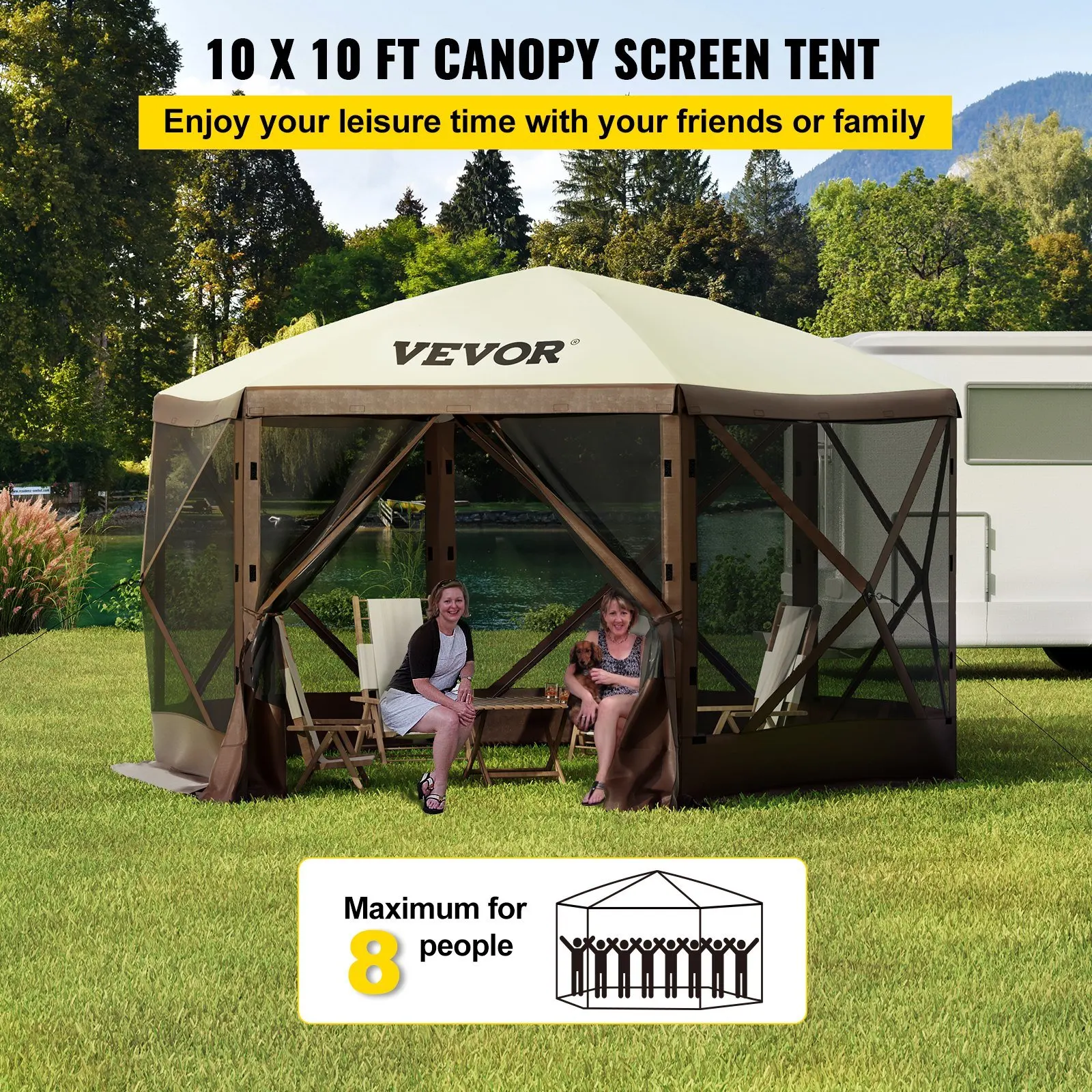
Critical Features: Choosing the Right Two-Room Tent
Room Dividers: Types and Considerations
The divider itself significantly impacts how effectively a two-room tent fulfills its purpose. Fully sewn-in dividers provide the most complete separation, often with better sound dampening and light blocking properties, but limit configuration flexibility. Removable dividers offer adaptability at the expense of some privacy—they typically attach using toggles, clips, zippers, or hook-and-loop fasteners.
The material opacity matters substantially. Some dividers are merely symbolic separations using mesh or translucent materials, while others use opaque fabrics that provide genuine visual privacy. Consider how much privacy your group requires when evaluating divider options.
Some premium models feature dividers with integrated doors or zippered openings that allow passage between rooms without removing the entire barrier. This thoughtful design preserves privacy while improving convenience.
True Capacity vs. Comfortable Capacity
Manufacturer capacity ratings typically represent the maximum number of standard sleeping pads that can fit side-by-side—not comfortable living space. For genuine comfort in a two-room tent, select a model rated for 2-4 more people than will actually use it.
Floor dimensions deserve careful attention beyond simple square footage. Consider the shape and how it accommodates your sleeping arrangements and gear. Some designs offer more usable space than others despite similar total area measurements.
Remember that some portion of the interior space will be occupied by gear rather than people. Calculate approximately 8-10 square feet per person plus additional space for equipment storage when determining appropriate capacity.
Entry and Access Design
Multiple doors significantly enhance two-room tent functionality—ideally, each room should have its own entrance to prevent disturbing others when entering or exiting. Consider door placement relative to the campsite layout and prevailing winds for optimal convenience.
Vestibules provide valuable transitional spaces that protect tent entrances and offer additional storage. Their size and configuration impact how effectively they serve as gear storage, cooking areas (with appropriate ventilation), or mudrooms.
Consider how occupants will move between spaces. Well-designed traffic patterns prevent bottlenecks and minimize disruption to those resting or sleeping while others move about the tent.
Weather Protection and Ventilation
Multiple occupants generate significantly more internal moisture through respiration and transpiration than solo campers. Look for robust ventilation systems with adjustable vents in each room to prevent condensation problems.
Full-coverage rainflies that extend to the ground provide superior weather protection compared to partial covers. For serious weather resistance, seek models with adequately taped seams and waterproof ratings of at least 1500mm hydrostatic head.
The contrast between selecting a compact shelter for two and a multi-room tent for groups involves different weather considerations—larger tents may catch more wind and require more robust pole structures for stability.
For additional perspective on the advantages of multi-room designs, consider reading about reasons to invest in multi-room tents for camping.
Setting Up for Success: Practical Tips for Two-Room Tent Users
Practice setup before your trip—two-room tents typically involve more complex pole structures and setup procedures than single-room models. A practice run in your backyard or a nearby park ensures you can efficiently assemble the tent at your destination, particularly important when arriving at camp near dusk.
Assign rooms and establish zones before unpacking—decide which group members will occupy each space and how common areas will be used before beginning setup. This planning prevents confusion and impromptu rearrangements that waste time and create frustration.
Maximize internal storage features to keep items organized and off the floor. Most two-room tents include numerous pockets, gear lofts, and hanging points. Establish systems for using these features consistently so items remain findable throughout your trip.
Implement ventilation protocols appropriate for occupancy levels and weather conditions. With multiple people generating moisture in a confined space, proper airflow management prevents uncomfortable condensation that can dampen gear and create clammy conditions.
Clean and dry thoroughly between uses to prevent mold and maintain waterproofing integrity. The larger size of two-room tents makes proper cleaning more time-consuming but no less essential for longevity.
For those prioritizing simpler setup processes while still enjoying separate spaces, easy-setup camping tents offer streamlined design without sacrificing the benefits of room division.
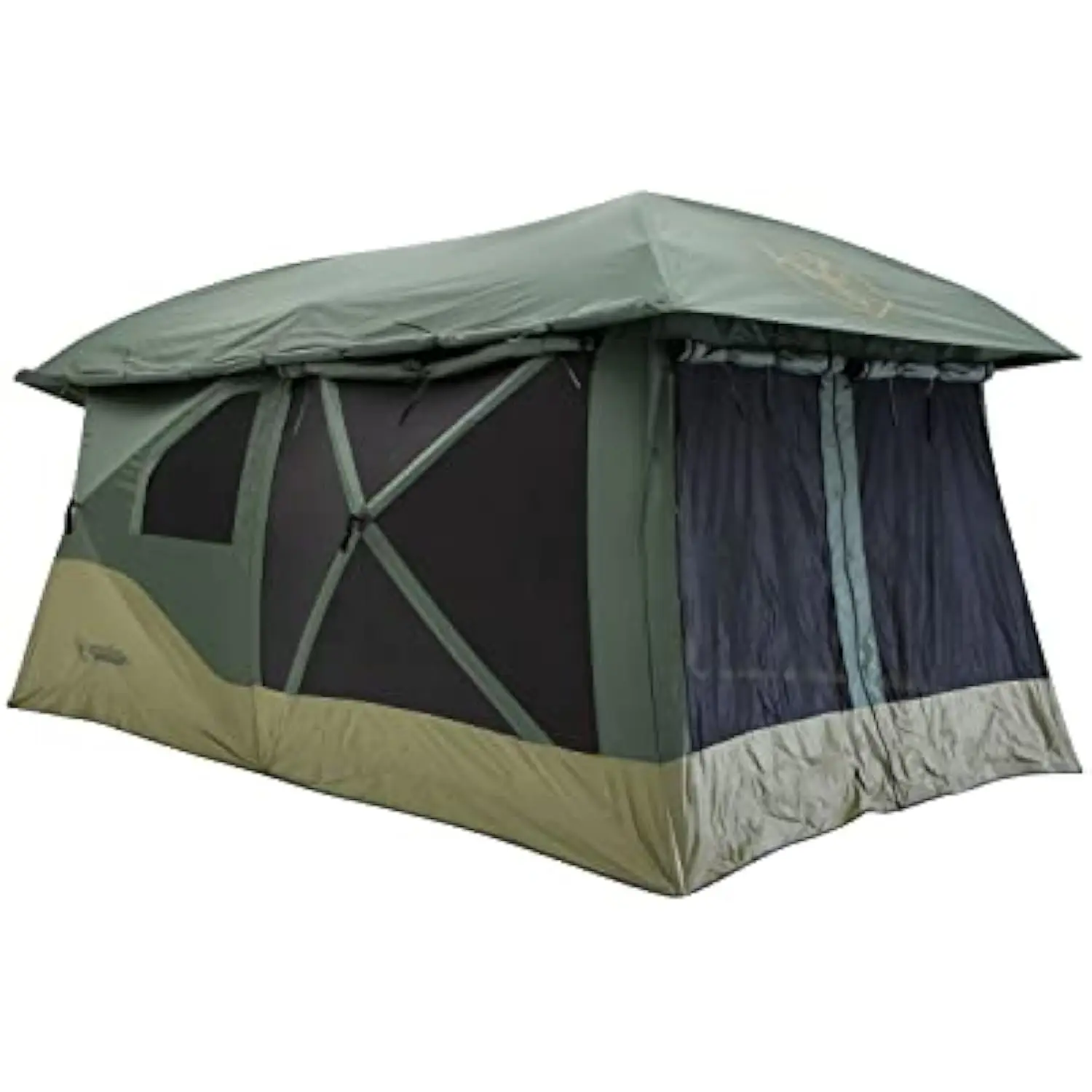
When Two Rooms May Not Be the Answer (Honest Considerations)
While two-room tents offer numerous advantages, they aren’t the ideal solution for every camping scenario. Acknowledging these limitations helps ensure you select appropriate accommodations for your specific needs.
The footprint size of multi-room tents often limits campsite options, particularly in established campgrounds with defined tent pads or in backcountry areas with limited flat terrain. Their larger size may exclude you from smaller, more private campsites that cannot accommodate their dimensions.
Weight and packed size considerations make two-room tents impractical for backpacking or situations requiring substantial portage. These designs are primarily intended for car camping or base camping scenarios where transportation to the site doesn’t involve carrying the shelter long distances.
The cost typically exceeds that of comparable single-room options or multiple smaller tents, representing a significant investment. For infrequent campers or those on tight budgets, alternative arrangements might provide better value.
For smaller groups or situations requiring maximum portability, exploring alternative camping shelter options for two may better serve your needs while still providing comfortable accommodations.
Transforming Your Next Group Adventure
Two-room tents have fundamentally changed the group camping experience by addressing the core challenges that traditionally made shared outdoor accommodations uncomfortable. The privacy they provide creates respect for personal space; their organizational potential keeps gear manageable and accessible; their versatility adapts to changing needs; and their enhanced comfort extends trip enjoyment and duration.
When selecting the ideal shelter for your group, consider your specific camping style, typical group composition, and the environments where you’ll be setting up camp. The investment in a quality two-room tent pays dividends in camping harmony—reducing common friction points and creating spaces where everyone can enjoy the experience on their own terms while maintaining the connection that makes group adventures special.
By thoughtfully implementing the separate spaces these innovative shelters provide, you create a camping environment that balances individual needs with group cohesion—the perfect foundation for memorable outdoor experiences that leave everyone eager for the next adventure.


